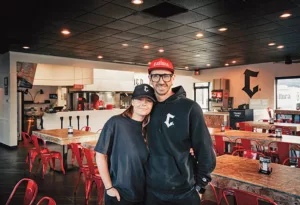
Home » Guest Commentary: Private sector is stepping up in support of tourism
Guest Commentary: Private sector is stepping up in support of tourism
New approach …
January 31, 2019
As our national deficit approaches $22 trillion—$180,000 per taxpayer—and state and local governments deal with skyrocketing costs for health care, pensions, education, and public safety, we will have to do things differently. One way to do this is to develop private-public partnerships to share costs and coordinate programs.
Take tourism, for example.
Over the years, our funding of state tourism promotion has been token at best. Historically, other priorities gobbled up state revenue, and when it came time to balance the budget, travel promotion got axed.
Our neighboring states invest heavily to attract travelers, and their investments are paying off. For example, the Montana Legislature appropriated $18 million for travel promotion in 2017. Subsequently, the University of Montana’s Institute of Tourism and Recreation found that the state received $3.5 billion in return.
In 2016-17, while Washington’s Legislature appropriated no money, California invested $117 million, Idaho appropriated $5 million, and Oregon spent $32 million. Nationally, Hawaii and Florida budgeted $87 million each, and Texas spent $46 million.
Realizing the fight for appropriations was a losing battle, the state tourism office closed in 2011. It became clear that a new approach involving the private sector was necessary.
The Washington Tourism Alliance was formed as a public-private partnership, and legislation two years ago created the state Tourism Marketing Authority, which now is eligible for up to $4.5 million a year in state funds as long as the private sector matches $2 for every $1 of tax money. That fund allows the WTA to develop a comprehensive strategy and market events and attractions domestically and internationally.
Travel and tourism are among the largest industries in the U.S. According to Statistics Portal website, they contributed $1.5 trillion to our gross domestic product in 2015 and provided 5.5 million jobs. The industry is projected to grow and generate $2.6 trillion by 2027.
Tourism is Washington’s fourth largest industry, generating $21.4 billion in annual spending and contributing $1.8 billion in state and local taxes, according to WTA. For every $1 spent on tourism marketing, between $2.50 and $20 in tax revenue is collected. Statewide, 182,700 workers are employed in tourism-related pursuits.
The new travel alliance needs to have flexibility to target promotional spending. There are parts of rural Washington that can benefit from statewide tourism promotion, especially places with freshwater and saltwater beaches. Statistics Portal found that more than half of vacationers head to the water’s edge.
As more people have the money and time to travel, Washington must invest in marketing to show potential visitors what makes our diverse state unique and beautiful. The bottom line is our opportunities to capture a much bigger share of travel dollars are much better if we pony up now to promote our state as “the place to visit.”
Don C. Brunell is a business analyst, writer, and retired president of the Association of
Washington Business. He now lives in
Vancouver, Wash., and can be contacted
at [email protected].
Latest News
Related Articles



_web.webp?t=1764835652)